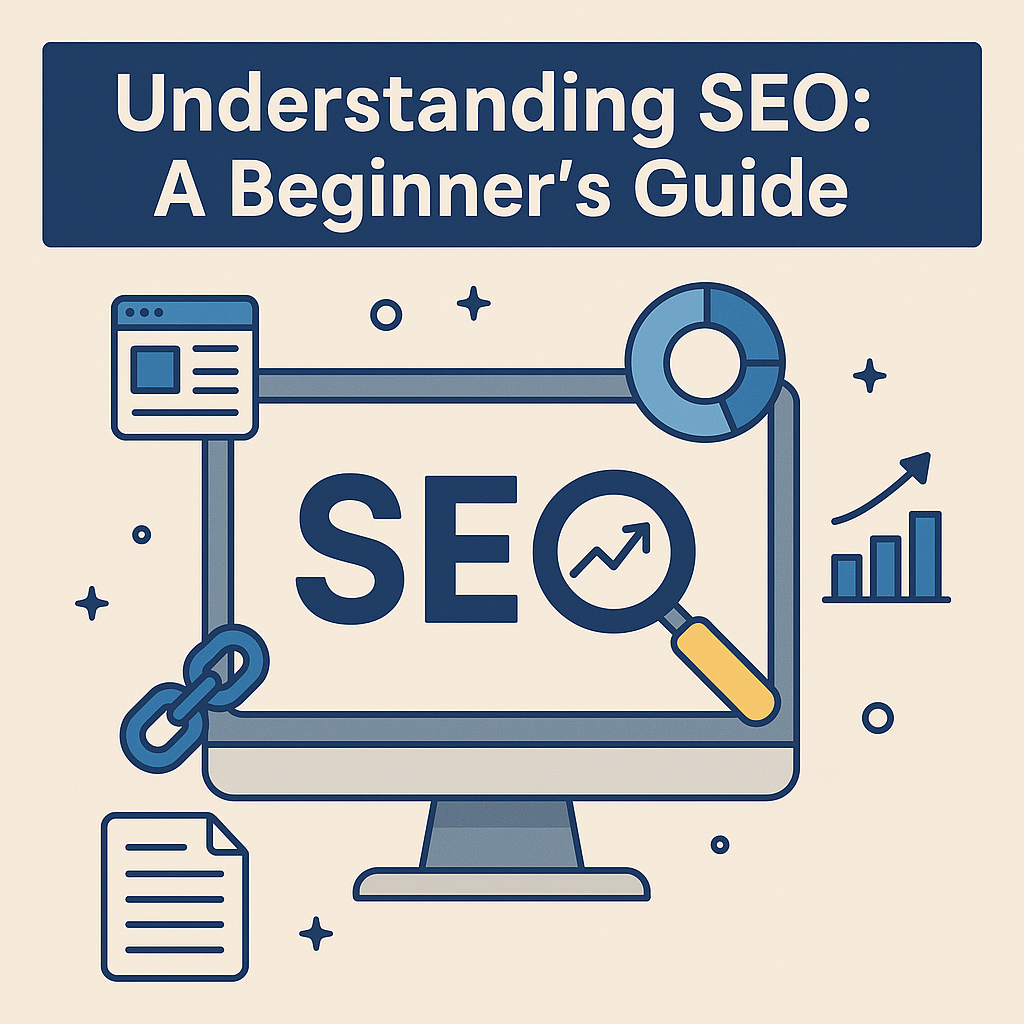Understanding SEO: A Beginner’s Guide
Introduction Search Engine Optimization (SEO) is the backbone of digital visibility. Whether you’re running a small business, a blog, or...

Introduction
Search Engine Optimization (SEO) is the backbone of digital visibility. Whether you’re running a small business, a blog, or an e-commerce platform, SEO helps drive organic traffic, improve your online presence, and boost your rankings on search engines like Google. If you’re wondering how to get started with SEO in 2025, you’re in the right place!
What Does SEO Mean?
SEO stands for Search Engine Optimization, which is the process of optimizing your website and its content to make it more visible in search engine results pages (SERPs). The better optimized your site is, the higher it can rank for keywords that matter to your business, like SEO for beginners, digital marketing tips, or best SEO tools.
What Are the 4 Types of SEO?
There are four main types of SEO:
- On-page SEO – Optimizing individual web pages, including content, meta tags, headings, and images.
- Off-page SEO – Activities done outside your website to improve rankings, like backlink building and social media marketing.
- Technical SEO – Improving the backend of your site (like site speed, mobile-friendliness, and secure connections).
- Local SEO – Targeting location-specific queries like “SEO agency near me” or “local SEO services.”
Each type plays a crucial role in your overall SEO strategy.
What Is On-Page SEO?
On-page SEO refers to optimizing elements within your website to improve visibility. This includes:
- Using relevant keywords (like how to optimize a website)
- Crafting compelling meta descriptions
- Adding internal links
- Improving page speed and mobile usability
- Using heading tags (H1, H2, etc.) properly
Well-executed on-page SEO helps both users and search engines understand your content better.
What Is Off-Page SEO?
Off-page SEO focuses on actions taken outside of your website to influence your rankings. This includes:
- Link building (earning backlinks from other websites)
- Guest posting
- Social sharing
- Brand mentions
A high-quality backlink from a relevant domain can signal trust and authority to search engines, helping you rank higher for keywords like link building strategies and improve SEO ranking.
How to Start SEO?
If you’re just starting, here are the basic steps:
- Keyword Research – Use tools like Ubersuggest, SEMrush, or Google Keyword Planner to find target terms like SEO tips 2025 or how to rank higher on Google.
- Content Creation – Write content that answers search intent. Blog posts, landing pages, and FAQs are great places to start.
- On-Page Optimization – Use your primary and secondary keywords naturally in content, titles, and descriptions.
- Technical Setup – Make sure your website is fast, mobile-responsive, and has an XML sitemap.
- Link Building – Start acquiring backlinks from reputable sources.
How to Get Backlinks?
Here are effective ways to earn backlinks:
- Guest Blogging – Contribute articles to high-authority websites.
- Create Shareable Content – Infographics, tools, or how-to guides often get linked.
- Reach Out – Connect with bloggers or influencers in your niche.
- List Your Site in Directories – Especially local and industry-specific ones.
These strategies help you rank for how to get quality backlinks or free backlink tips.
Are Backlinks Free?
Yes and no. Backlinks can be free if earned organically through great content and relationships. But some websites charge for placements or run paid directories. Be careful — buying backlinks can violate Google’s policies and harm your rankings. Focus on earning backlinks naturally for long-term success.
What Is DA and PA in SEO?
- DA (Domain Authority) – Developed by Moz, DA predicts how well your entire domain will rank.
- PA (Page Authority) – Also by Moz, this score estimates how well a specific page will rank.
Sites with high DA and PA are more likely to rank for competitive keywords like SEO services or digital marketing tools.
What Is TB in SEO?
TB refers to Trust Flow, a metric created by Majestic. It evaluates the trustworthiness of a website based on the quality of backlinks. Higher TB = more trustworthy in Google’s eyes. A good TB helps boost your authority and rank for keywords like trusted SEO strategies.
Conclusion
SEO is not a one-time effort but an ongoing process. Start small—optimize your content, build a few backlinks, and measure results. Stay updated with algorithm changes and never stop learning. With consistent effort, your website can start ranking for valuable keywords like best SEO practices and increase website traffic organically.





